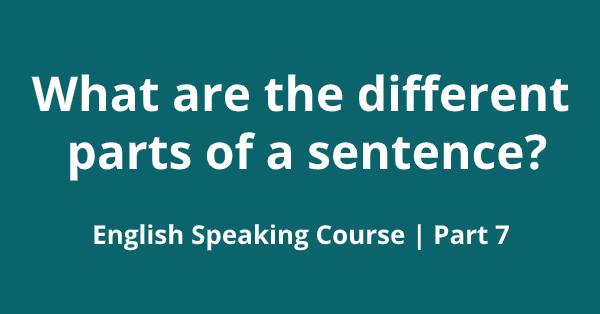Parts of a sentence
A sentence has three essential parts: Subject, verb, and object. Let us learn more about the three parts of a sentence.
- Subject
The subject of a sentence is what you are talking about. It can also refer to someone or something that acts. The subject is the person or the thing that gives meaning to the verb. To make things clear let’s look at some examples.
For instance, consider the following sentences:
– John is walking.
Here, the subject is John as he is performing the verb, ‘walking’.
– I am going to school.
In this case, the subject is ‘I’, and the verb is ‘am going’.
– Mary will bring the eggs.
Here, the subject is ‘Mary’, and she will bring the eggs.
Finding the subject of a sentence is easy. It would help if you found the verb, and then you will be able to find the subject.
However, some sentences have complex subjects. Complex subjects consist of more than one word. Here are some examples:
– What you are trying to do is dangerous.
In the above sentence, ‘what you are trying to do’ is the subject as it refers to the verb ‘is’.
– The number of candies he has can fill a swimming pool.
In this case, the subject is ‘the number of candies’, and the verb is ‘can fill’.
- Verb
The verb defines an action or the condition of the subject. It tells us about what is taking place. Some verbs are easily identifiable. For instance, consider the following sentences:
– Roy ran away.
Here, the verb is ‘ran’.
– Shelly eats salads on Sundays.
Here, the verb is ‘eats’.
– The crows are flying across the sky.
Here, the verb is ‘flying’.
However, some verbs are difficult to identify. Look at the following examples:
– I love potatoes.
In this case, the verb is ‘love’.
– Jim feels lonely at school.
Here, the verb is ‘feels’.
– They know about the deal.
Here, the verb is ‘know’.
In addition, there are two types of verbs in a sentence: the Main verb and the Helping verb.
The main verbs are the ones that describe the action of the object. These include dance, sit, sing, play, run, jump, move, think, read, see, etc. You can quickly identify the main verbs.
Helping verbs are also known as auxiliary verbs. Helping verbs tell us about the state of the object. For example: is, am, are, was, has, have, will, do, had, etc. are all helping verbs.
- Object
An object is a thing or a person whom the subject affects. The state of the subject has a direct effect on the object.
For example:
– Everyone knows her.
Here, the object is ‘her’.
– Do you play tennis?
In this case, the object is ‘tennis’.
– This room has no windows.
Here, the object is ‘windows’.
In conclusion, there are three main parts of a sentence: subject, verb, and object. These three parts form the basic structure of a sentence. Understanding the three regions and knowing where to use them will help you write better sentences.

